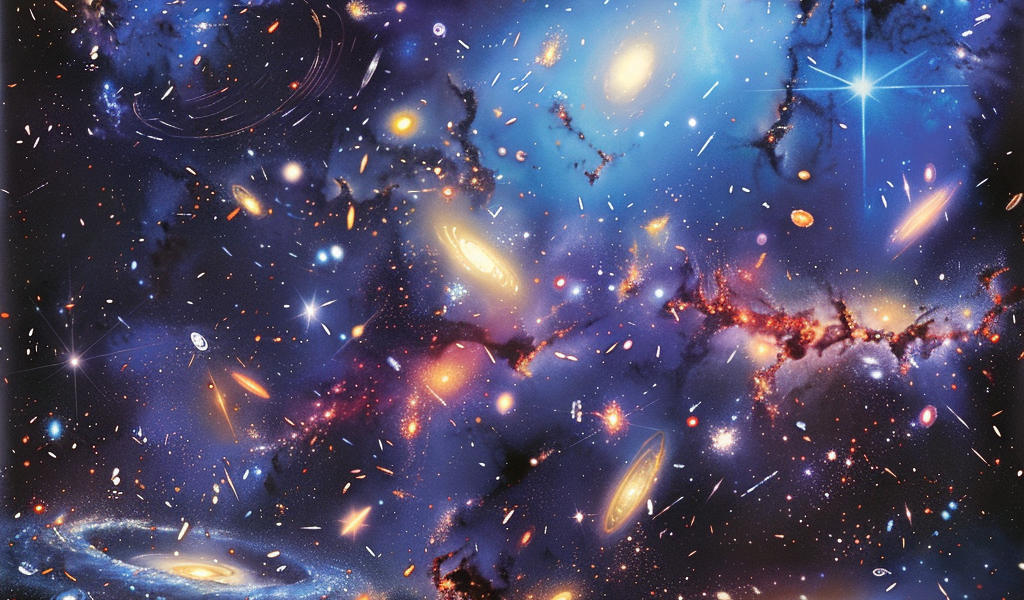Astronomers Challenge Established Theories on Reionization Epoch
Recent findings from the James Webb Space Telescope (JWST) have sparked significant debate in the astronomical community regarding the epoch of reionization—a pivotal period in the universe’s history. Traditionally, scientists believed that this era, marked by the formation of the first stars and galaxies, concluded approximately one billion years after the Big Bang. However, new research suggests that this monumental transition may have occurred much earlier, potentially ending at least 350 million years sooner than previously thought.
The study, published in the Monthly Notices of the Royal Astronomical Society: Letters, presents a reevaluation of the timeline for reionization based on the latest observational data from the JWST. This telescope, known for its advanced capabilities, has been instrumental in enhancing our understanding of the early universe.
To comprehend the significance of this finding, it is essential to grasp the events that unfolded in the universe’s infancy. Following the Big Bang, the universe existed as a hot, dense plasma composed of protons and electrons for the first 380,000 years. As the universe expanded and cooled, these particles combined to form neutral hydrogen atoms. Approximately 100 million years later, the first stars and galaxies began to emerge, heralding the dawn of the epoch of reionization.
These initial stars were colossal, with some theorized to be between 30 to 300 times more massive than our sun. Their immense gravitational forces and energy output, primarily in the form of extreme ultraviolet light, played a crucial role in the transformation of the universe. This intense radiation interacted with nearby hydrogen atoms, causing them to undergo ionization—a process where hydrogen is split into protons and electrons.
As this ionization progressed over hundreds of millions of years, the universe transitioned from a state dominated by neutral hydrogen to one filled with ionized gas. This transformation is particularly significant given that hydrogen constitutes roughly 75% of all matter in the universe. Julian Muñoz, an assistant professor of astronomy at The University of Texas at Austin and lead author of the study, emphasized the monumental nature of this change, stating, “You went from neutral and cold and boring to ionized and hot. And this isn’t something that only happened to one or two galaxies. It happened to the whole universe.”
John Chisholm, another assistant professor of astronomy at UT Austin and co-author of the paper, added, “The process heated and ionized gas in the universe, which regulated how fast galaxies grew and evolved. These early stars established the overall structure of galaxies in the universe.” This statement underscores the critical role that the epoch of reionization played in shaping the cosmos as we know it today.
Despite the importance of this epoch, directly observing the reionization process remains an elusive challenge for astronomers. Consequently, researchers rely on theoretical models and indirect evidence to estimate its timeline. These models incorporate various measurements, including the luminosity of distant galaxies and the distribution of ionized hydrogen in the universe.
The JWST’s advanced technology has enabled astronomers to gather unprecedented data, allowing them to refine existing models and challenge long-held assumptions. As observations continue to accumulate, the implications of this research may lead to a paradigm shift in our understanding of cosmic evolution.
As the scientific community processes these findings, discussions surrounding the implications for galaxy formation and evolution are likely to intensify. The potential for earlier reionization raises questions about the conditions that existed in the early universe and how they may have influenced the subsequent development of cosmic structures.
In summary, the latest insights from the JWST have opened new avenues for exploration in the field of astronomy. The reexamination of the epoch of reionization, along with its profound impact on the universe’s evolution, highlights the dynamic nature of scientific inquiry and the ongoing quest to unravel the mysteries of our cosmos.





